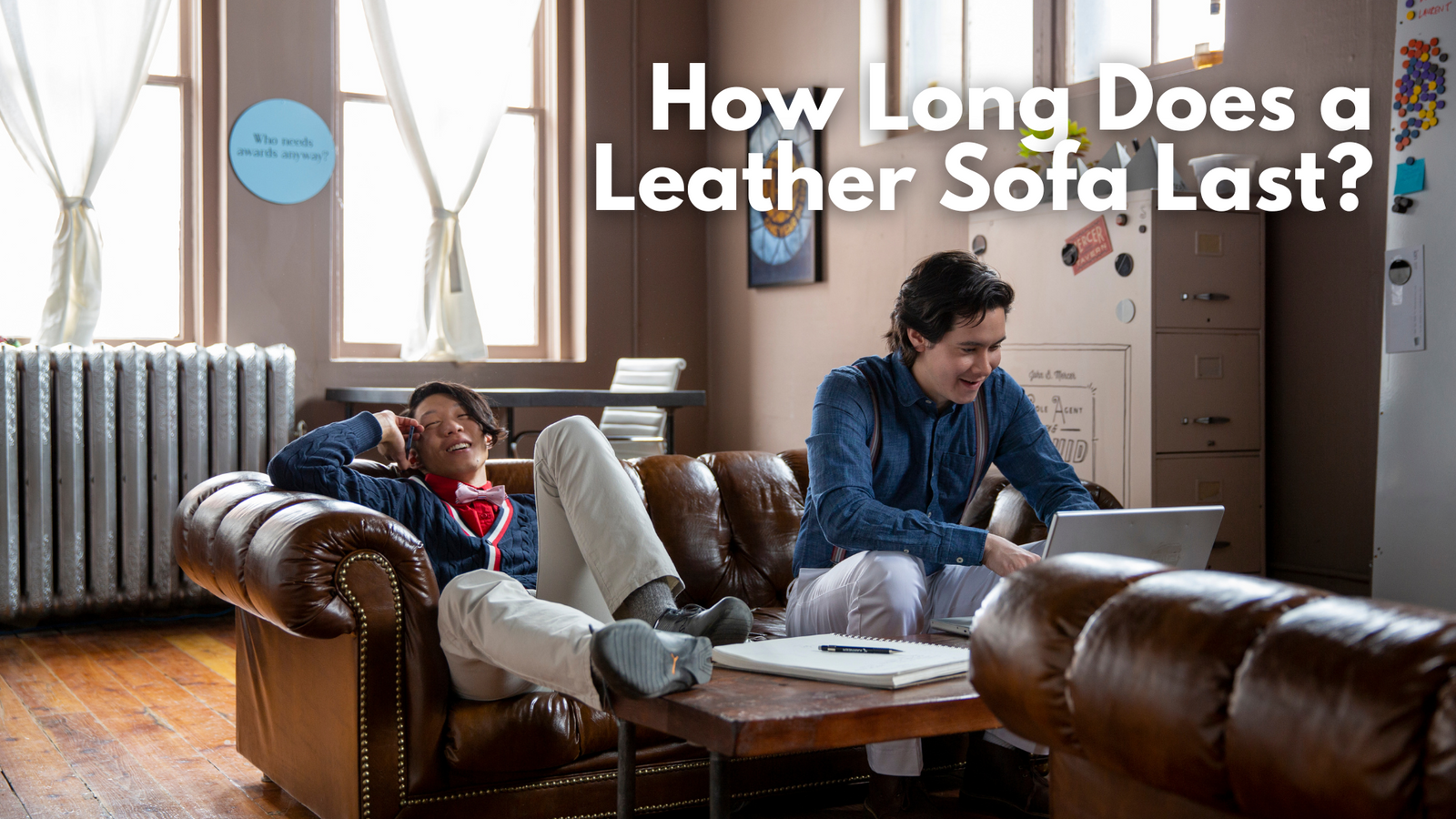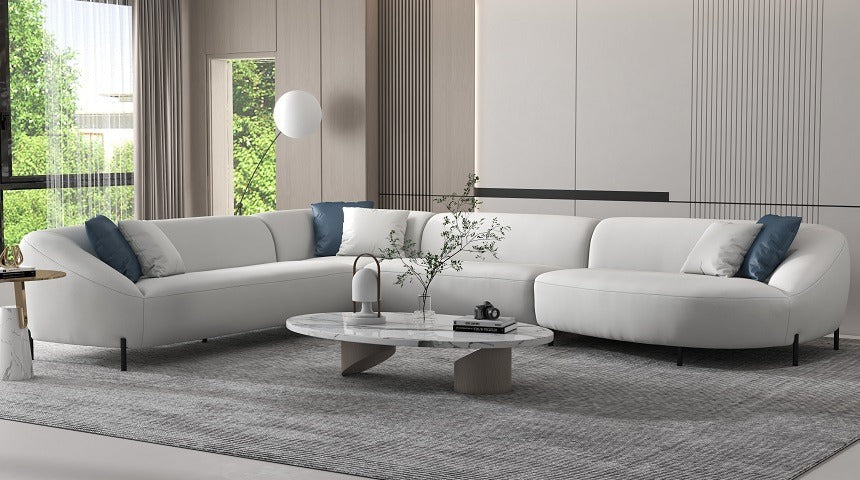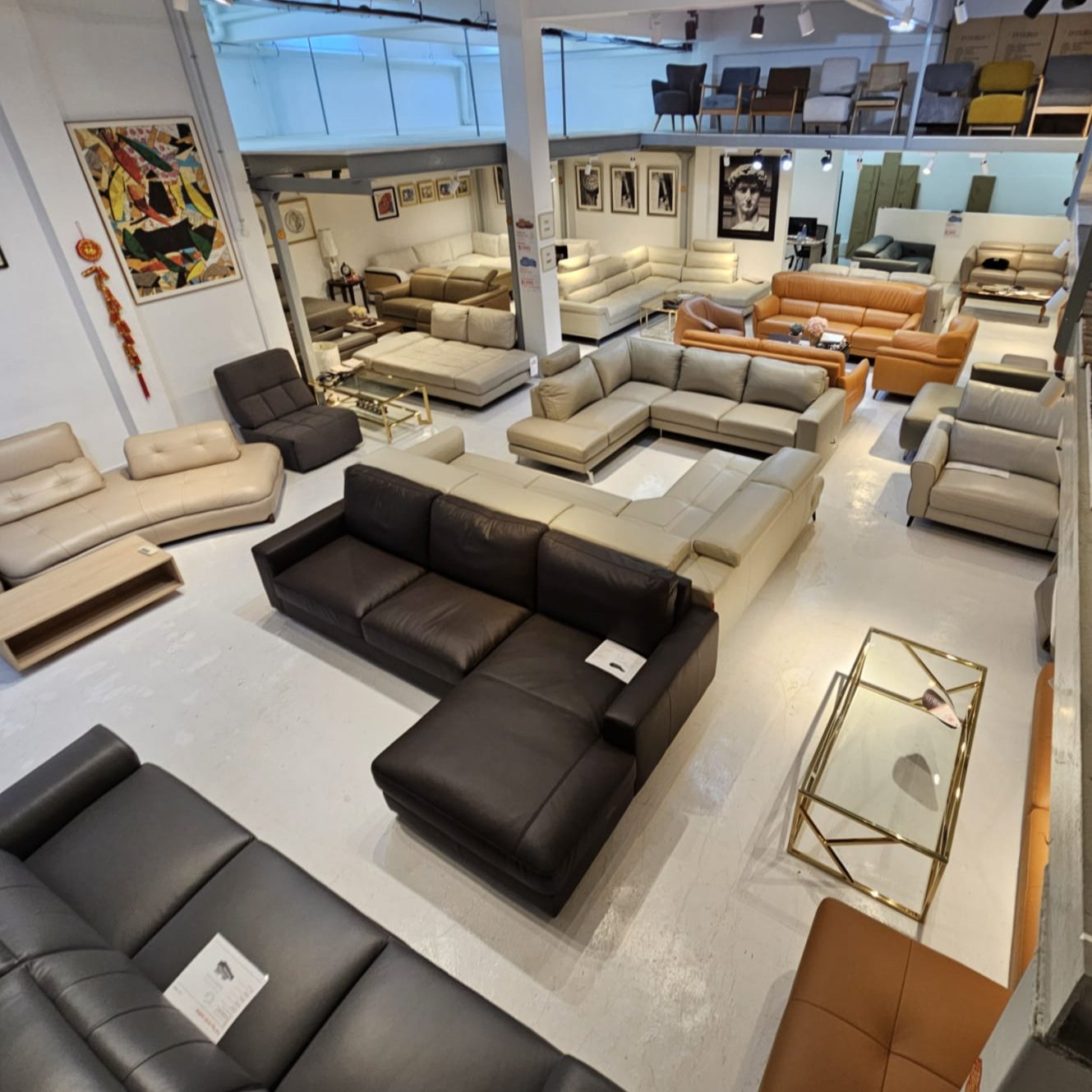The lifespan of a leather sofa depends on several factors, including the quality of the leather, construction, and how well it's maintained. On average, a high-quality leather sofa can last between 15 to 20 years, or even longer with proper care. Here are some key factors that influence its durability:
1. Leather Quality
Top-grain and full-grain leather are the most durable and can last decades. Lower-quality leathers like bonded or split leather may wear out faster.
2. Construction
The craftsmanship of a sofa is critical. A well-made sofa with a solid hardwood frame and strong stitching will last longer than one made from cheaper materials. The better the construction, the longer the sofa can withstand regular use.
3. Maintenance
Regular cleaning, conditioning, and protection from direct sunlight can help extend the life of your leather sofa. Without proper care, the leather can dry, crack, or fade over time.
4. Usage
In a busy household, particularly with children, the sofa will likely experience frequent use. Jumping, roughhousing, and general day-to-day use can cause the leather to wear out faster. Families that use their sofa for multiple activities, like eating or lounging, may see more stains, spills, and general deterioration over time. Regular cleaning and conditioning can help mitigate some of the damage, but heavy use in residential settings will inevitably shorten the lifespan of the leather.
5. Warranty
Many high-quality leather sofas come with warranties, offering protection for several years. A warranty can cover defects in craftsmanship or materials, which ensures your investment is protected. However, warranties often do not cover wear and tear due to heavy usage, so it's crucial to read the terms carefully.
6. Timely Repairs
Addressing minor issues early on, such as scratches, tears, or loosened stitching, can prevent them from worsening. Timely repairs can significantly extend the life of your leather sofa. Professional upholstery services can restore leather and handle more extensive damage, keeping your sofa in good condition for years to come.
7. Environmental Factors
Environmental conditions play a crucial role in the lifespan of your leather sofa. Exposure to strong sunlight can cause the leather to fade and dry out, making it brittle over time. It's essential to keep leather sofas away from direct sunlight or use UV-protective window treatments to minimize exposure.
In humid conditions, leather can absorb moisture, leading to mold or mildew if not properly cared for. Using a dehumidifier in damp environments can help maintain the leather's quality. On the other hand, extremely dry conditions can cause the leather to lose its natural oils, leading to cracking. Using leather conditioner regularly can help retain the leather's moisture balance.
8. Pets in the Household
-
Large Dogs: Large dogs can be tough on leather sofas. Their weight, nails, and tendency to jump on furniture can cause scratching, stretching, and punctures. Over time, even well-trained dogs can leave lasting marks on a leather sofa if protective measures aren’t taken. Regular nail trimming and using a protective cover when the dog is allowed on the sofa can help.
-
Cats Scratching: Cats are notorious for scratching furniture, and leather sofas are no exception. Leather can be especially appealing to cats due to its texture. Scratches from cat claws can cause visible damage, leading to tears and scuffs. Additionally, some cats may target the sofa as a marking spot, scratching repeatedly in the same area, which can lead to irreparable damage. Providing cats with scratching posts and using protective sprays or covers can help reduce the likelihood of them scratching the sofa.
-
Peeing Cats: If a cat urinates on a leather sofa, the damage can be significant. Leather is porous and can absorb liquid quickly, causing stains and unpleasant odors. This can be particularly problematic with leather, as urine can cause discoloration and weaken the material over time. Cleaning up spills immediately and using enzyme-based cleaners specifically designed for leather can help, but repeated incidents may leave permanent damage.
Commercial Environments
Leather sofas used in commercial environments like bars, offices, or coworking spaces experience even more wear and tear. The constant foot traffic, varied users, and prolonged daily usage result in faster deterioration. In bars, for example, spills, scuffs from patrons, and the occasional rough use can make it challenging to maintain the leather’s quality. Offices and coworking spaces tend to see less destructive use, but they still involve frequent sitting and wear from multiple individuals. Commercial-grade leather, which is thicker and more durable, may be better suited to these environments, and regular professional cleaning can help extend its life.
Public Areas
In public spaces such as waiting rooms, airports, or reception areas, leather sofas are exposed to continuous use by a wide range of people. These sofas may face constant sitting, the friction of different clothing materials, and general wear over time. Leather furniture in public areas often has to be more robust, and it's advisable to use higher-grade leathers, thicker upholstery, and possibly even protective treatments to maintain their appearance. Regular professional cleaning and maintenance are essential to keep them looking good in these high-traffic environments.
Conclusion
By investing in high-quality leather and maintaining it well, you can expect your leather sofa to be a long-lasting piece of furniture.
- Heavy Residential Use: In a busy household, a high-quality leather sofa can last 10 to 15 years with proper care. However, with rougher use, such as children jumping on it or frequent spills, this lifespan may be reduced to 7 to 10 years.
- Commercial Environments: In high-traffic commercial environments like offices, or coworking spaces, a leather sofa may last 5 to 8 years on average. The constant use and exposure to spills, scuffs, and heavy foot traffic cause the leather to wear out more quickly, even with regular maintenance. If well-maintained and made with commercial-grade leather, the lifespan could stretch closer to 10 years.
- Homes with Large Dogs: With large dogs frequently using the sofa, the leather may begin to show wear such as scratches and punctures within 5 to 7 years, depending on how rough the dog is. If extra care is taken, like using protective covers and regularly conditioning the leather, the sofa could last up to 8 to 10 years.
- Homes with Cats: If cats regularly scratch the leather, the lifespan of the sofa may drop to 5 years or less without preventive measures. Urine incidents can also degrade the leather quickly, especially if not cleaned up immediately. With training, the use of protective sprays, and covering the sofa, it might last up to 7 to 10 years.
- Public Spaces: In high-traffic public spaces such as waiting areas, bars or lounges, a leather sofa will typically last 2 to 5 years due to constant use. With robust leather and frequent professional care, it can last up to 7 years.
Recommended Links
- Shop all KUKA leather sofas.
- Recliner Collection.
- Caring for PU, PVC, and faux leather sofas and furniture.
- Semi-Aniline Leather vs. Full-Aniline Leather: Understanding the Difference.
- Leather Sofas - Top 10 Frequently Asked Questions (Singapore).
- Shop solid wood sofas.
- Follow our facebook page for the latest deals.















